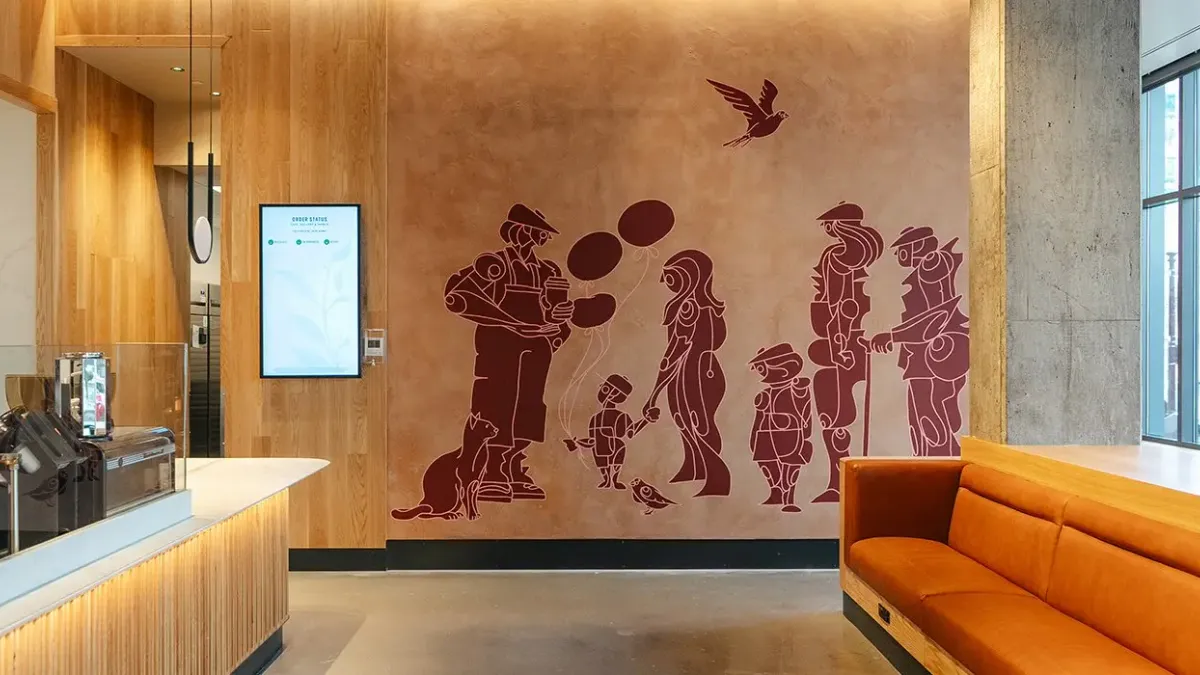Dive Brief:
- Starbucks said it will “begin to incorporate” a new accessibility design framework in remodels and new built U.S. stores this year, according to a press release issued Friday.
- The program, termed the “Inclusive Spaces Framework,” includes layout changes to stores, like acoustic and lighting changes and continuous, unobstructed paths of travel for greater ease of access for customers and workers with a disability.
- Starbucks opened a renovated store in Washington, D.C., Friday designed according to the framework, complete with a new POS, power operated doors and other layout and equipment changes.
Dive Insight:
The changes, Starbucks said in the releases, are intended to “better meet the needs of its partners, customers and communities,” given that as many as a quarter of U.S. adults have some form of disability.
The acoustic and lighting features are intended to minimize reverberations that interfere with assistive hearing devices and reduce glare. On the operational side, Starbucks’ POS at the D.C. location is portable, height adjustable and has voice-assisted ordering and visual order confirmation, features that may make it easier for employees to use and improve order accuracy. The chain’s new single-cup brewer, also has accessibility features “like a larger dial, visual and haptic confirmation and a light to notify partners when brewing is complete.” The D.C. store features prominent digital signage tracking customer orders.
Tony Coelho, a former U.S. congressman, and one of the authors and sponsors of the Americans with Disabilities Act, said the framework was “a big moment as we try to make retail spaces more accessible and inclusive,” and that “we have to go beyond just what is required to put accessibility and inclusion first to ensure all people feel like they belong in community spaces.”
Starbucks said it wanted stores to meet an elevated accessibility standard by 2030 in an informational sheet explaining the framework. That sheet lists examples of categories included in the framework but did not specify which would be standard across the chain’s system.
The coffee chain did immediately respond to a request to clarify which of the features in the D.C. location would be standard across new builds and remodels, or how some, like unobstructed pedestrian paths from the front doors to the ordering area, would be balanced with existing layouts or other design elements.












